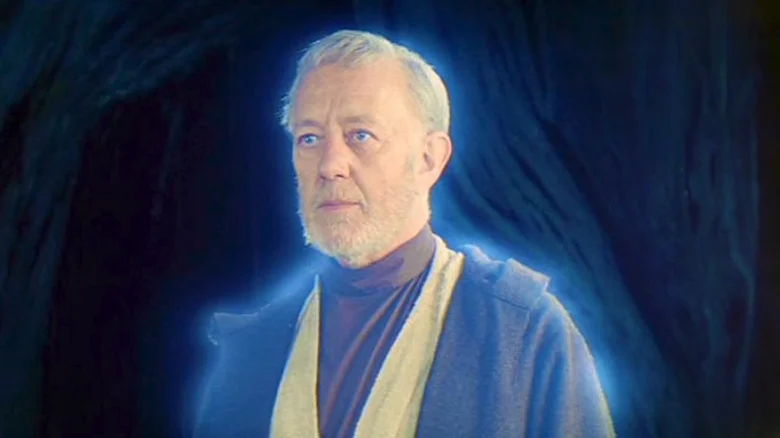How Star Wars Brought Force Ghosts To Life In The Time Before CGI
www.slashfilm.com/1384686/star-wars-pre-cgi-force-ghost-special-effects

'In John Phillip Peecher’s “Star Wars – The Making of ‘Return of the Jedi,’” Howard Kazanjian, who produced all three Original Trilogy installments (as well as "Raiders of the Lost Ark), spilled the beans on the Force ghost process, and how it changed from “The Empire Strikes Back” to “Return of the Jedi.”
For “Empire,” Sir Alec was placed in front of a black velvet background, where he delivered his lines without another actor present. “The aura was then added to his image, and this film was composited together with the film of Mark,” said Kazanjian. Alec wasn’t a fan of this approach. As Kazanjian observed, “[I]t’s awfully hard to get into the scene and deliver your lines to another actor who isn’t even there.” This is, of course, commonplace now in the age of CG-laden blockbusters, where characters and whole environments are added in post-production, but at the time, for the classically trained Sir Alec, this held zero appeal.
When it came time to shoot Sir Alex’s scenes for “Return of the Jedi,” the filmmakers made sure the legendary British actor would be able to perform on an actual set with actual people (namely Mark Hamill). This meant they had to tweak the Force ghost filming process a tad. According to Kazanjian, they did so thusly:
“In order to have Sir Alec and Mark in the same scene and still be able to add the shimmer to Ben Kenobi’s image — remember, he isn’t actually ‘alive’ in these scenes — we had to do certain shots with the VistaVision camera. The VistaVision film will give us a rock-steady image to work with later. Shooting this scene as one normally does also meant that Sir Alec couldn’t touch Mark or cross in front of him, because we don’t want the shimmer, when it’s added, to overlap onto Mark. It’s more difficult to add the shimmer in the lab, but we think that the performances will more than make up for the extra trouble.”
‘Yes, VistaVision! The widescreen 35mm format invented by Paramount in 1954, shown off to dizzyingly gorgeous effect in Alfred Hitchcock’s “Vertigo,” proved incredibly helpful to the “Star Wars” FX wizards throughout the shooting of the original trilogy. Though Paramount abandoned the format in 1961, the VistaVision camera proved integral to the shooting of the series’ groundbreaking optical effects. Not to be all fogeyish (but yes, to be all fogeyish), it was so much fun to get under the hood of these pre-CG movies. It might’ve been a pain in the tuchus to make them (George Lucas would certainly agree), but this handmade quality beats ones-and-zeroes every time.’